
Data type coercion in Go language has always been an important issue that developers need to face. Although the Go language is a statically typed language, in actual development, we often encounter situations where data type conversion is required. This article will use specific code examples to discuss data type coercion techniques in the Go language to help readers better understand and master this important knowledge point.
In the Go language, due to its static typing characteristics, conversions between data types must be clear and legal. The Go language provides a simple and intuitive way to convert data types, which can be achieved by using type conversion operators. The following will demonstrate how to perform data type coercion through several common data type conversion scenarios.
1. Conversion between integers
In the Go language, conversion between integers of different sizes requires explicit type conversion. For example, convert a variable of type int to type int64:
var a int = 10 var b int64 b = int64(a) fmt.Println(b)
2. Conversion between floating point types
Conversion between floating point types is also a common situation, such as Convert a float32 type variable to float64 type:
var x float32 = 3.14 var y float64 y = float64(x) fmt.Println(y)
3. Conversion between strings and byte slices
In Go language, between strings and byte slices Conversions are also common operations. This can be achieved through the []byte() and string() functions:
var str string = "Hello, World!" var bytes []byte bytes = []byte(str) fmt.Println(bytes) newStr := string(bytes) fmt.Println(newStr)
4. Interface type assertion
in Go language , interface type assertion is a common type conversion operation. You can use the .(type) syntax to make assertions and convert the interface type to a specific type:
var i interface{} = 42
j := i.(int)
fmt.Println(j)5. Conversion between structures
in Go language , conversion between structures is also an issue that needs attention. Conversion between structures can be performed through explicit assignment:
type Person struct {
Name string
Age int
}
type Employee struct {
Name string
Age int
Department string
}
p := Person{Name: "Alice", Age: 30}
e := Employee{Name: p.Name, Age: p.Age, Department: "Engineering"}
fmt.Println(e)Through the above examples, we can see how to perform data type coercion in Go language under different circumstances. It should be noted that when performing data type conversion, it is important to ensure that the conversion is legal and safe to avoid causing errors during program runtime.
Summary: Data type coercion is an inevitable part of Go language development. Proper use of data type conversion operators can better handle conversion issues between data types. I hope that through the introduction of this article, readers can have a deeper understanding and mastery of data type coercion techniques in the Go language.
The above is the detailed content of Practical drill: Data type coercion skills in Go language. For more information, please follow other related articles on the PHP Chinese website!
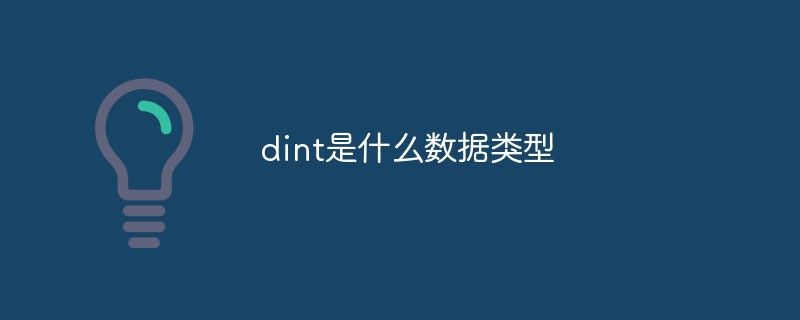 dint是什么数据类型Sep 05, 2022 am 11:05 AM
dint是什么数据类型Sep 05, 2022 am 11:05 AMdint是带符号位的32位整数类型;dint的表示方法及范围是“L#-2147483648~L#+2147483647”,定义为双整数或长整数,字节是电脑里的数据量单位,在计算机中,数据只用0和1这种表现形式。
 Python时间序列数据操作的常用方法总结Apr 24, 2023 pm 10:22 PM
Python时间序列数据操作的常用方法总结Apr 24, 2023 pm 10:22 PM时间序列数据是一种在一段时间内收集的数据类型,它通常用于金融、经济学和气象学等领域,经常通过分析来了解随着时间的推移的趋势和模式Pandas是Python中一个强大且流行的数据操作库,特别适合处理时间序列数据。它提供了一系列工具和函数可以轻松加载、操作和分析时间序列数据。在本文中,我们介绍时间序列数据的索引和切片、重新采样和滚动窗口计算以及其他有用的常见操作,这些都是使用Pandas操作时间序列数据的关键技术。数据类型Python在Python中,没有专门用于表示日期的内置数据类型。一般情况下都
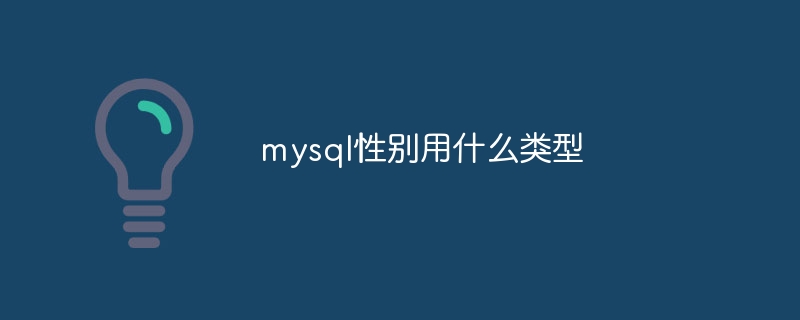 mysql性别用什么类型Jun 13, 2023 am 11:33 AM
mysql性别用什么类型Jun 13, 2023 am 11:33 AMMySQL性别采用多种数据类型来表示性别字段,例如CHAR、ENUM等,最终采用哪种类型,取决于实际需求以及数据存储的大小和性能。
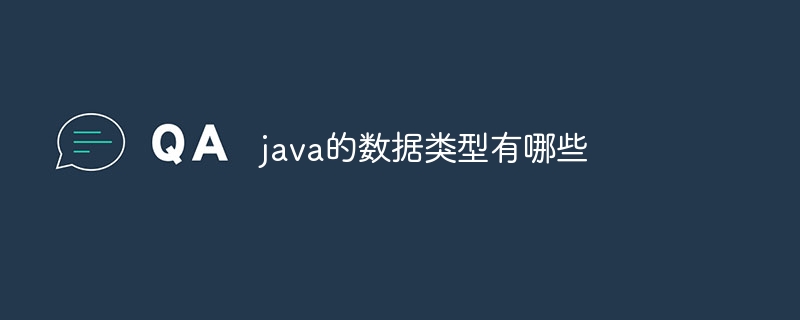 java的数据类型有哪些Jan 30, 2024 pm 03:23 PM
java的数据类型有哪些Jan 30, 2024 pm 03:23 PMjava数据类型:1、整型;2、浮点型;3、字符型;4、布尔型;5、其他数据类型;6、引用类型;7、原始类型与封装类;8、自动装箱与拆箱;9、可变参数;10、注解;11、枚举;12、原始类型和引用类型的选择。Java是一种强类型语言,因此每种数据都有其固定类型。
 decimal是什么类型Mar 18, 2021 pm 04:03 PM
decimal是什么类型Mar 18, 2021 pm 04:03 PMdecimal是MySQL中存在的精准数据类型,语法格式“DECIMAL(M,D)”。其中,M是数字的最大数(精度),其范围为“1~65”,默认值是10;D是小数点右侧数字的数目(标度),其范围是“0~30”,但不得超过M。
 MySQL数据类型详解:你需要知道的知识点Jun 15, 2023 am 08:56 AM
MySQL数据类型详解:你需要知道的知识点Jun 15, 2023 am 08:56 AMMySQL是世界上最流行的关系型数据库管理系统之一,因其可靠性、高安全性、高扩展性以及相对低的成本而得到了广泛应用。MySQL的数据类型定义了各种数据类型的存储方式,是MySQL的重要组成部分。本文将详解MySQL的数据类型,以及在实际应用中需要注意的一些知识点。一、MySQL的数据类型分类MySQL的数据类型可以分为以下几类:整数类型:包括TINYINT、
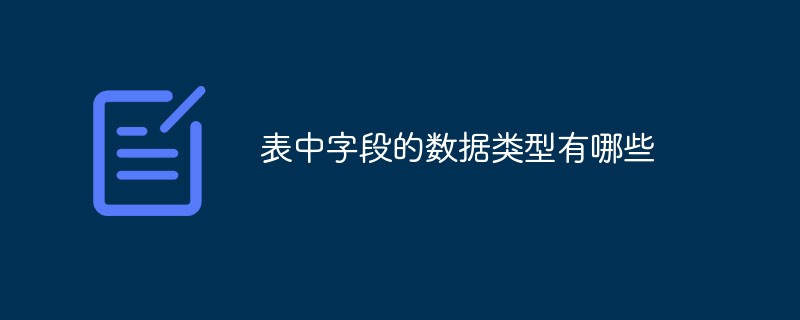 表中字段的数据类型有哪些Jan 19, 2021 am 10:18 AM
表中字段的数据类型有哪些Jan 19, 2021 am 10:18 AM表中字段的数据类型有:1、二进制类型,包括Binary、Varbinary、Image;2、字符串类型,包括CHAR、VARCHAR、TEXT等;3、Unicode数据类型,包括Nchar,Nvarchar和Ntext;4、日期和时间数据类型,包括DATE、TIME、YEAR等;5、数值数据类型,包括INT、FLOAT、BIGINT等;6、货币数据类型;7、特殊数据类型等等。
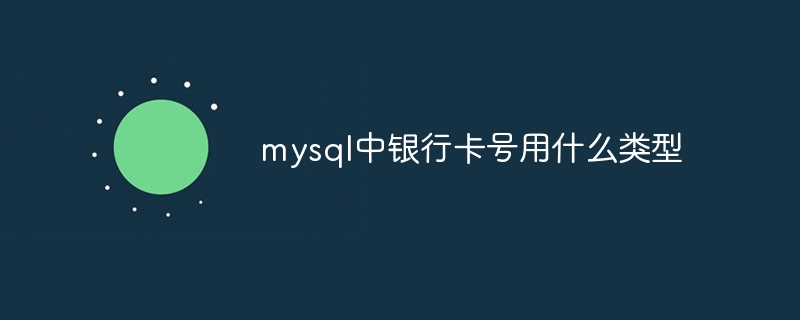 mysql中银行卡号用什么类型Jun 14, 2023 pm 04:34 PM
mysql中银行卡号用什么类型Jun 14, 2023 pm 04:34 PMmysql中银行卡号用“varchar”字符串类型,因为银行卡的号码较长并且全是数字,为了方便存储,就统一存储为字符串类型。如果用“number”类型,会超出“int”类型的最大值范围,必须用“bigInteger”存储,而它不利于数据的正常转换。


Hot AI Tools

Undresser.AI Undress
AI-powered app for creating realistic nude photos

AI Clothes Remover
Online AI tool for removing clothes from photos.

Undress AI Tool
Undress images for free

Clothoff.io
AI clothes remover

AI Hentai Generator
Generate AI Hentai for free.

Hot Article

Hot Tools

Dreamweaver Mac version
Visual web development tools

MinGW - Minimalist GNU for Windows
This project is in the process of being migrated to osdn.net/projects/mingw, you can continue to follow us there. MinGW: A native Windows port of the GNU Compiler Collection (GCC), freely distributable import libraries and header files for building native Windows applications; includes extensions to the MSVC runtime to support C99 functionality. All MinGW software can run on 64-bit Windows platforms.

MantisBT
Mantis is an easy-to-deploy web-based defect tracking tool designed to aid in product defect tracking. It requires PHP, MySQL and a web server. Check out our demo and hosting services.

Atom editor mac version download
The most popular open source editor

Notepad++7.3.1
Easy-to-use and free code editor







